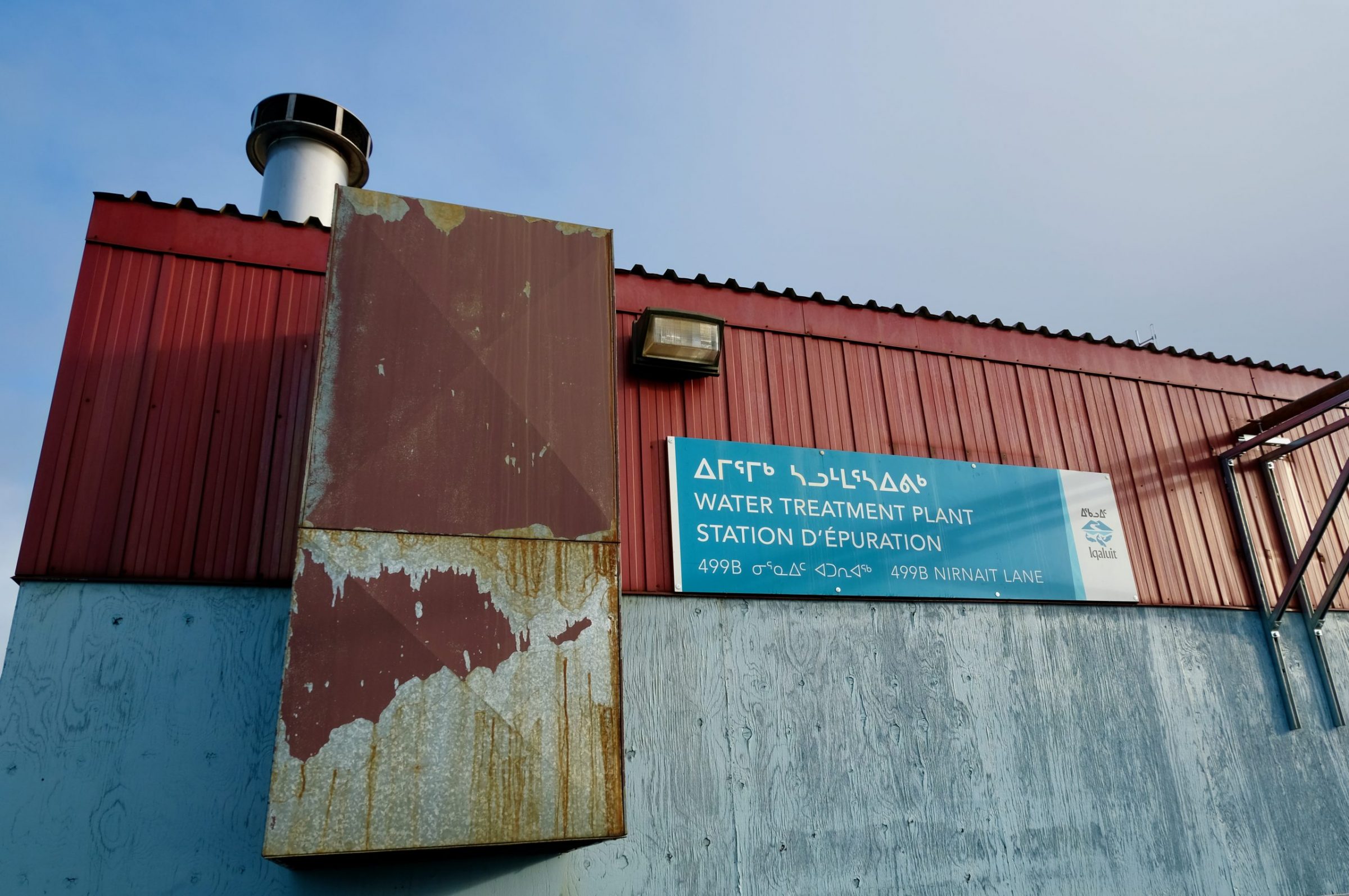Iqaluit officials won’t say if they probed diesel smell at water plant
Health Department inspector recommended city hire a consultant after fumes permeated plant in October
A Department of Health official recommended on Oct. 8 that the City of Iqaluit hire a consultant to investigate whether a strong diesel smell at the water plant, shown here, correlated with reported smells in the water. City officials have not confirmed that ever happened. (Photo by Mélanie Ritchot)
City officials will not say if they followed a Department of Health recommendation to investigate whether a strong smell of diesel at the water treatment plant in October was caused by reported fuel odours in the city’s water supply.
Nunatsiaq News reported in December that an “unbearable” smell of diesel drove a Department of Health environmental officer from the water treatment plant during an inspection on Oct. 8.
Wilfred Ntiamoah was there that day to investigate reports at the time that treated city water smelled of fuel.
He concluded after his visit that the City of Iqaluit should hire an environmental consultant to investigate whether there was a connection between the smell at the plant and the smell in the water.
On Dec. 11, the City of Iqaluit unveiled a webpage called “Water Facts,” which details a timeline and other information related to the two-month water crisis where fuel contamination in the city’s water supply rendered it undrinkable.
On that page, the city includes some detail about what was going on at the water treatment plant at the time.
“On Oct. 8th and 12th, a boiler mechanic was conducting repairs on a leak to the fuel day tank supply line,” states the page.
“The repair resulted in fuel smells at the water treatment plant during this repair work. This leak and fuel smell were not related to the contamination in the water treatment plant or reports of a fuel smell coming from drinking water.”
The city’s webpage does not clarify whether the City of Iqaluit followed Ntiamoah’s recommendation to hire a consultant to come to that conclusion.
Nunatsiaq News reached out to WSP engineer Ian Moran, who was hired by the city to investigate several aspects related to the fuel contamination, but he declined comment.
City of Iqaluit administration has not responded to repeated questions over the past three weeks about whether Ntiamoah’s recommendation was followed.
When Nunatsiaq News posed the question to Iqaluit Mayor Kenny Bell on Dec. 22, he also would not confirm that detail.
Instead, he reiterated, “The smell on Oct. 8 was due to the maintenance and did not correlate with the actual water issue in the North well.”
According to a report prepared by Moran, with WSP, and shared with Nunatsiaq News by City of Iqaluit spokesperson Aleksey Cameron last month, the fuel infiltrated the water treatment plant in a gas form, through a process called petroleum vapour intrusion.
Vapour intrusion is a phenomenon by which volatile compounds — such as petroleum — can build up underneath buildings and seep into basements and other enclosed structures.
Moran didn’t respond to Nunatsiaq News’s questions about whether vapour intrusion could have been behind the smell at the water treatment plant on Oct. 8.
People have been told its safe to consume City of Iqaluit water since Dec. 10.
Nunavut’s chief public health officer, Dr. Michael Patterson, has said a third party will review the government’s response to the fuel emergency, but there is no timeline yet for when that will happen.







Cover ups everywhere you turn . People want answers. Time to get them. Come on Mr. Mayor. Spill.
Kenny bell is mad because the comment section isn’t singing his praises and he therefore won’t respond to nunatsiaq news. This is the maturity level of our mayor. He is more concerned about his ego then providing information to the community.
First Nunaut then Hawaii, damn poor military planning and its contamination.